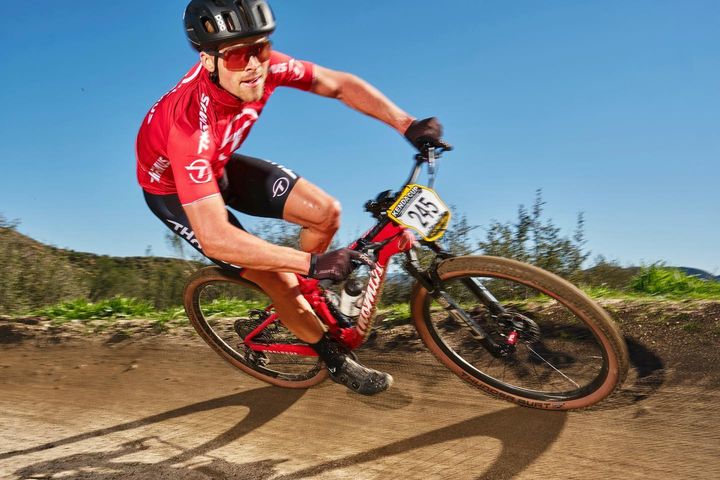University of Oregon Study Reveals Sweat Creates Serious Safety Hazards for Endurance Athletes
July 21, 2025

Half of cyclists report sweat-related performance disruptions; 77% of athletes actively annoyed by sweat during exercise
EUGENE, Ore. (July 21, 2025) /ENDURANCE SPORTSWIRE/ – A comprehensive study conducted by the University of Oregon’s Warsaw Sports Business Center has revealed that sweat poses significant performance challenges and safety risks for endurance athletes. The study surveyed athletes in cycling and running, and found consistent attitudes about the detrimental effect of sweat in the eyes and on eyewear. For instance, half of cyclists in the study reported experiencing dangerous situations due to sweat entering their eyes during rides.
The study, led by University of Oregon Warsaw Sports Business Center MBA graduate student Ariyahna Bernard, surveyed 405 endurance athletes across 47 states to examine how sweat impacts athletic performance and safety. The findings demonstrate that sweat management is far more than a comfort issue—it’s a critical safety concern.
Key Findings:
- 56 percent of athletes must wipe sweat from their eyes as often as every ten minutes during activity
- 50.8 percent of cyclists reported sweat-related interruptions during rides that forced them to slow down or stop
- 45.2 percent of runners experienced similar performance disruptions
- 77 percent of all respondents stated they are actively annoyed by sweat during performance
- 90 percent of participants reported moderate to heavy sweating during exercise
The study revealed particularly concerning safety implications, with athletes reporting impaired vision from stinging or blurred eyes, loss of concentration resulting in near misses or crashes, and actual injuries including falls and accidents due to obstructed vision.
“What we discovered goes well beyond simple discomfort from sweat during endurance workouts,” said Ariyahna Bernard, MBA student at the Warsaw Sports Business Center who conducted the research. “Athletes are experiencing temporary blindness mid-activity, crashes, and serious safety hazards. The fact that half of cyclists, who often wear helmets and other protective gear, still face these sweat-related dangers shows the issue is real and there’s a significant gap in current solutions.”
The research found that cyclists were slightly more likely than runners to report sweat-related performance issues, despite often wearing helmets or headgear designed to provide some protection. This suggests that existing gear may not adequately address forehead sweat or eye irritation.
Age demographics revealed additional interesting patterns, with younger runners (ages 15-24) most affected by sweat disruption at 53.3 percent, while cyclists aged 35-54 and 65 and over showed the highest disruption rates at over 53 percent.
Athletes begin using sweat management tools at an average temperature of 67.5°F, and 43 percent continue training outdoors during off-seasons, indicating that sweat management is a year-round concern rather than just a summer issue.
The study also found a strong interest among athletes in innovations to help manage issues related to sweating, with 64.8 percent of cyclists and 57 percent of runners reporting that they would be somewhat or extremely likely to try a product designed to prevent sweat from entering their eyes.
“These findings validate what we’ve been hearing from athletes in the field,” said Tom Kelley, CEO of Veo Strip. “Sweat isn’t just an inconvenience, it’s a performance and safety barrier that can derail training sessions and put athletes at real risk. The data shows there’s a clear need for better solutions that keep athletes safe and performing at their best.”
About the Study
The comprehensive survey collected both quantitative data and qualitative accounts from recreational and competitive athletes, providing insight into the behavioral patterns, preferences, and unmet needs of the endurance sports community. The research surveyed 405 endurance athletes, including runners (66 percent) and cyclists (33 percent) across varied age ranges and experience levels to assess the impact of sweat on performance and safety. The study was completed at the suggestion of Veo Strip. Veo did not provide funding or other financial support.
The complete study results are available for download.
About Veo Strip
A start-up that created an innovative product for one purpose—to keep sweat from affecting an athlete’s vision during physical activities. Veo Strips are comfortable, unobtrusive, and indispensable for athletes who demand focus and peak performance. Learn more at www.veostrip.com.





